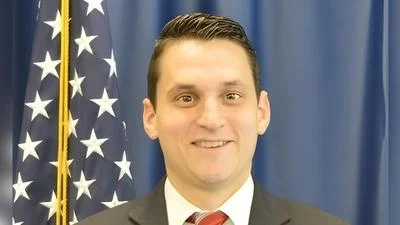The Science Speaks blog series offers a deep dive into science, technology, and innovation topics on the minds of the public. The series explains focal topics through relatable analogies and asks readers to consider key opportunities, explore avenues for advancing gender equity and equality, and answer the ultimate question: Why should we care?
In the 2009 animated comedy Cloudy with a Chance of Meatballs, fictional inventor Flint Lockwood devises a machine to turn water vapor into food. The machine accidentally becomes lodged in the stratosphere and causes cheeseburgers to fall from the sky. The rationale for Flint’s fantastical invention is reminiscent of a far more realistic yet equally exciting technology: carbon dioxide utilization.
As part of the larger category of technologies referred to as “carbon capture, utilization, and storage” (CCUS), carbon dioxide utilization is the concept of reusing the greenhouse gas carbon dioxide after it is collected via carbon capture. Like Flint’s invention, carbon dioxide utilization seeks to transform an abundant atmospheric gas into a practical, value-added product. By finding alternative uses for captured carbon dioxide, utilization offers exciting research and entrepreneurial opportunities, which means it can also provide opportunities for women’s economic empowerment.
But in Cloudy with a Chance of Meatballs, the character Sam Sparks, a female reporter covering Flint’s invention, explains how women and girls regularly contend with harmful stereotypes that threaten their leadership in climate innovation. In Sam’s case, this includes being ridiculed for her interest in meteorology, and in the real world, systemic and cultural barriers hinder women and girls from studying science, technology, and engineering disciplines critical to developing carbon dioxide utilization and other important technologies.
Within these disciplines—as if inspired by the range of foods produced by Flint’s invention—researchers are widening the scope of marketable products that can be made from carbon dioxide. These include chemical feedstocks (needed to synthesize pharmaceuticals, plastics, and more) and carbon-neutral fuels (so named because burning them results in no new carbon dioxide reaching the atmosphere). If carbon dioxide-derived fuels are used alongside a second round of carbon capture, the entire process could theoretically be carbon-negative.
One of the most widely studied methods of carbon dioxide utilization is catalysis, often via a process called electroreduction. A voltage is applied to drive a chemical reaction that turns carbon dioxide into a different carbon-containing molecule, such as the alternative fuel methanol. When performed in water, electroreduction can even be tailored to generate “synthesis gas,” which is further reacted to produce fuels. But the field of electrochemistry (where much of this research takes place) consists of disproportionately few women scientists.
Non-catalytic methods also exist. For instance, captured carbon dioxide can be injected into concrete mixtures, where it chemically reacts with calcium ions to form solid calcium carbonate. Not only does this trap carbon dioxide, but it strengthens the concrete, potentially decreasing the amount needed for a project. This has numerous benefits, as concrete accounted for 8% of global greenhouse gas emissions as of 2020. As is the case for electrochemistry, women are underrepresented in construction fields, including concrete production.
Nature-based methods of utilization tap into photosynthetic processes. Plants and plant-like organisms (e.g., microalgae) consume carbon dioxide and can be used as the basis for carbon-neutral biofuels. Plus, just as Flint’s invention produces an abundance of airborne food in Cloudy with a Chance of Meatballs, agricultural yields (albeit on the ground) can be boosted by treating fields with biochar, a byproduct of biofuel synthesis.
While researchers have suggested that different utilization methods will offer different magnitudes of emissions reduction, an effective strategy will likely employ multiple tools in the carbon dioxide utilization toolbox, selected based on the needs and resources of a given location. Pieces of this puzzle are increasingly coming to light, such as a women-led start-up that has demonstrated the generation of jet fuel from carbon dioxide.
Carbon dioxide utilization doesn’t risk spaghetti tornadoes or other food-related weather events, but challenges to its implementation do exist. Electroreduction (and other catalytic methods) require robust energy inputs since carbon dioxide is extremely stable and thus reluctant to undergo chemical reactions. As a result, it is crucial that energy used in these processes be derived from renewable sources, particularly as utilization efforts are scaled up.
The United States recognizes the need to explore myriad solutions to achieve our goal of limiting global temperature increase to 1.5 degrees Celsius and reaching net-zero emissions by 2050. The State Department is working with allies and partners to advance technological climate solutions, such as carbon capture and utilization, and the Interagency is conducting and funding research that seeks to transform carbon waste streams into value-added products. Diplomatic and programming efforts support women and girls as they pursue opportunities in science, technology, engineering, and mathematics fields and help women access climate-relevant sectors, including renewable energy and construction .
Flint Lockwood should consider transforming a different greenhouse gas the next time he creates a physics-defying invention. Where could carbon dioxide utilization appear in your life?
About the Author: Aubrey R. Paris, Ph.D., is a contracted Gender, Climate & Innovation Policy Advisor in the Secretary’s Office of Global Women’s Issues (S/GWI). Dr. Paris received her Ph.D. in Chemistry and Materials Science from Princeton University and B.S. in Chemistry and Biology from Ursinus College.
Original source can be found here.








